Responsible for Character and Interactive Object Art, Environment Arrangement, and Level Design
Role/ Artist & Level Designer
Type / AR Video Game Design, 2021
Device/ Microsoft Hololens 2
Development Time/ 2 Weeks
/ Group Project
with Angelina Shi, Chao Li, Max Cameron, and Tsai-Yen Ko
Software/ Unity, Maya, Substance Painter, Illustrator, Photoshop
Pyramid Panic is an AR maze game about helping the archeologist escape from the mummy's chase and find the way out. The player could help guide the archeologist by using hand gestures to open the doors or light up the fire holders.
Demonstration Video
Level Design
In this game, we decided to divide the whole experience into three levels. By Introducing mechanisms and enlarge the maze one at a time, players can feel more sense of control and reduce the possibility of failure in this game. My detailed design process is as follows:
1. Modularized:
I set up the modularized maze system in Unity and the rectangular shape of the final levels to make the future iteration easier.
2. Size:
I subsequently decided the size of the first two elementary levels, making the three levels have significant differences in difficulties and feel connected among game levels because of the outer rings and architectural structures.
3. Game Mechanism:
I put the two mechanisms (opening doors and lighting up the fire holder) into game levels one at a time. For instance, the first level only has one door mechanism for the player to be familiar with the AR interaction and environment. The second level introduces the second mechanism, and the final game level has more maze branches and obstructions to test the player for figuring the way out.
4. Path:
Considering most of the players don't have experience in Hololens, we try to create a low-difficulty game without losing game conditions. I make levels with very few routes and have multiple paths connected to the endpoint. The first two levels only have one or two routes, and four routes interconnect at the third level.
5. Difficulty:
When it comes to fine-tuning the game difficulties, I set up pillar models inside the maze to block part of the player's vision. The design intends to create a sense of connection between the two levels. Moreover, these blockages guide the player to move and rotate their position during the gameplay.

Spatial Design
1. Using Pillars
To utilize the use of space in the AR environment, I came up with the idea of using pillars to emphasize the height of the environment, letting players immerse themselves in the planner maze game rather than feeling control in the outside world.
2. Measuring Height
We test the size of levels depends on the restriction of player's movement, dimensions of the lecture hall/ demonstration space, the cable wire length, etc. After several iterations, I adjust the height of the pillars to make the height of the game the same as the virtual plane to the ceiling (around 12 feet)
3. Exaggerate Height Difference
Between game levels, I exaggerate the transition according to the height of each game level. Hence transition between each game level would be one floor high.
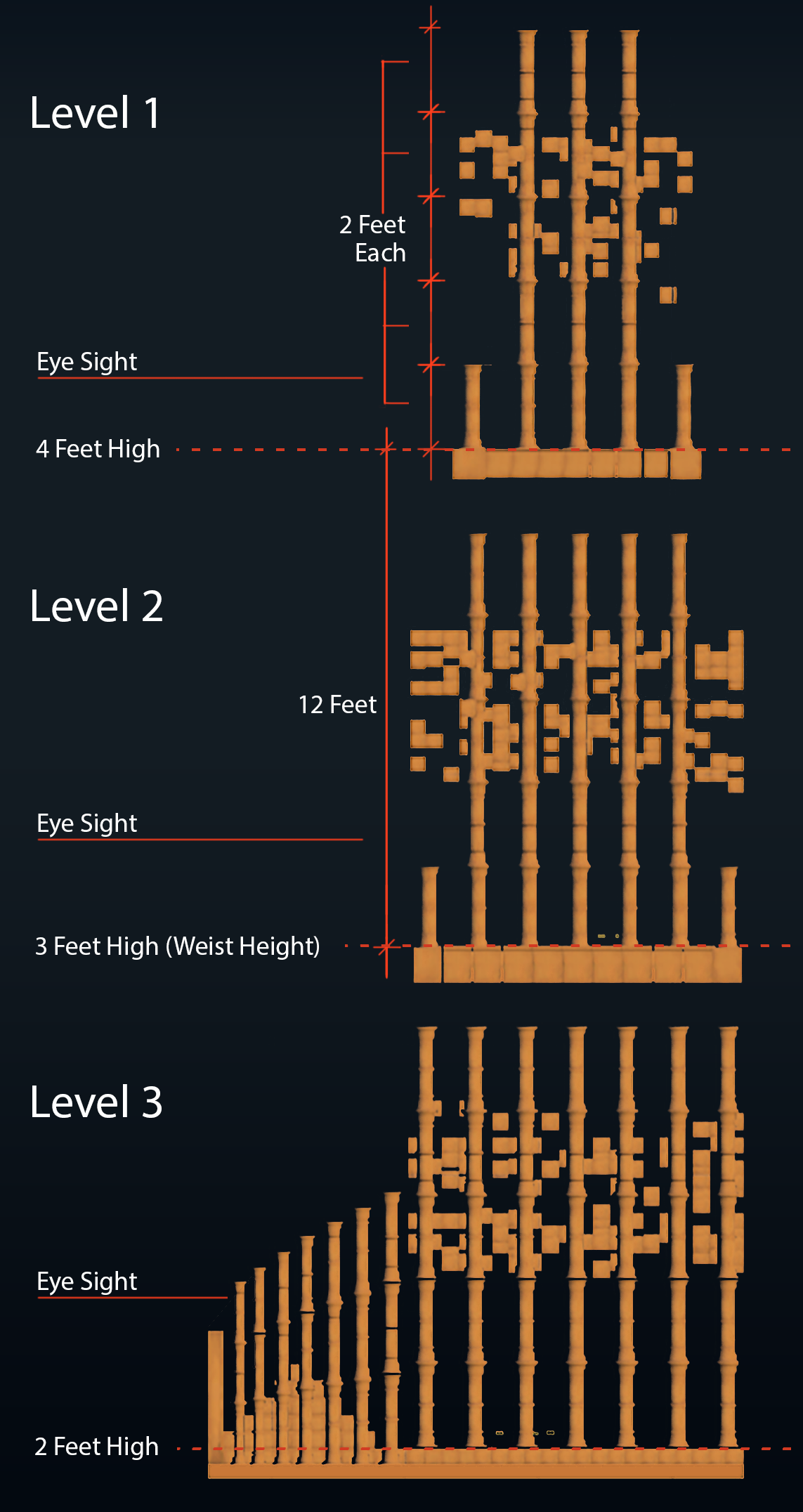
Dimensions of Each Level
4. Transitioning Process
To make the transition process more satisfying, I duplicate multiple random floating cubes and hanging pillars on the upper area of each floor.
5. Anchor the Environment
To emphasize the relationship between the virtual and physical environment more, I design the surroundings of the game area, making the level looks like anchoring in the classroom.
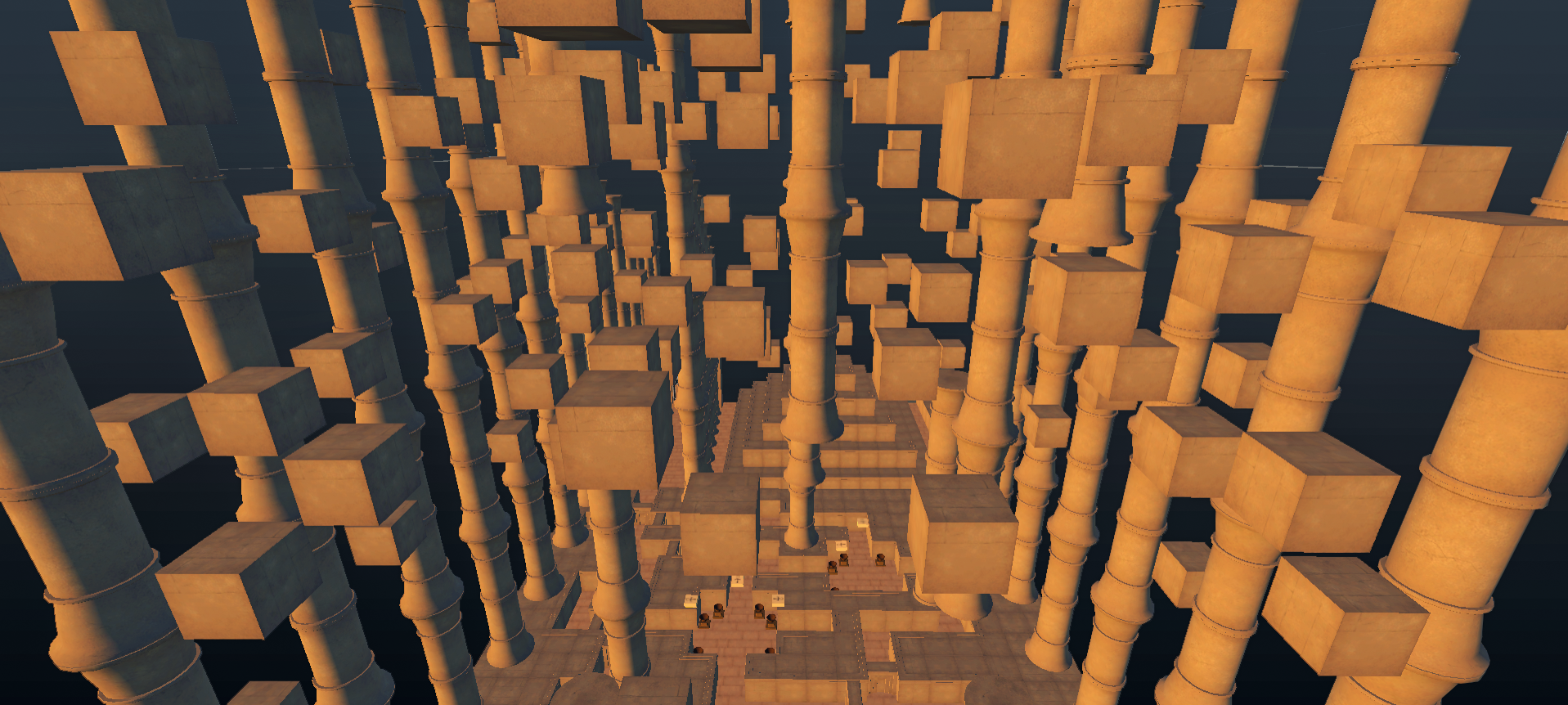
Falling Process Perspective
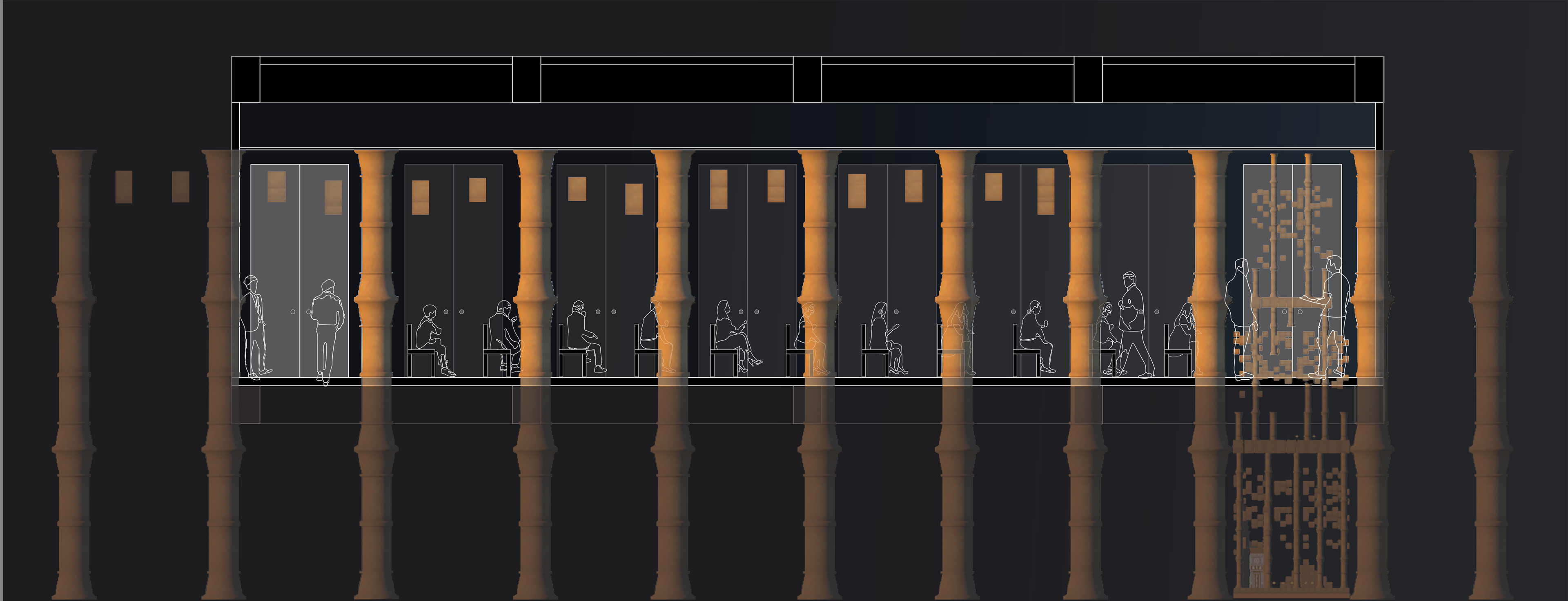
Anchoring the AR Environment in the Lecture Hall
Transition Process Video
Character & Interactive Asset Art
I make the character art of the two characters - Mummy and Archeologists. They designed to be cute and cartoony considering the distance between player and the characters in the maze. And the bigger head make them able to extinguish by the certain distance.
Mummy
The character design focus more on the exaggeration of the eye part of mummy, and the posture of walking and idle character animation is leaning forward to create a sense of cute and cumbersome.
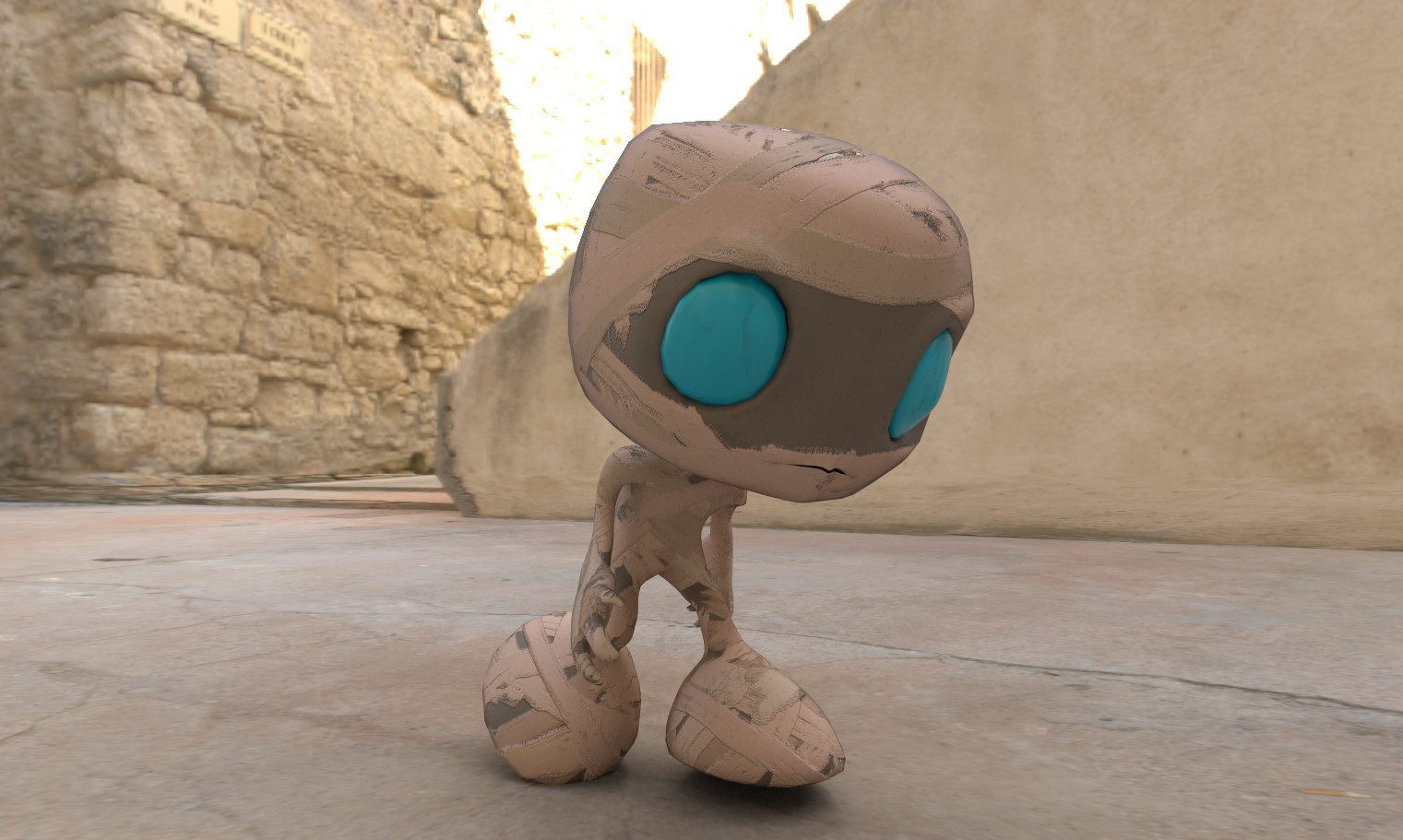

Transition Door
The variate color and the totem of Transition doors are inspired by fake doors in the pyramid. Including the symmetrical design on the front, reorganizing letters and worship of the Eye of Horus.
I also add side trims and characters at the side of the transition doors making the players feel more consistent between each side of the asset.

All Characters and Illustrations

Front View
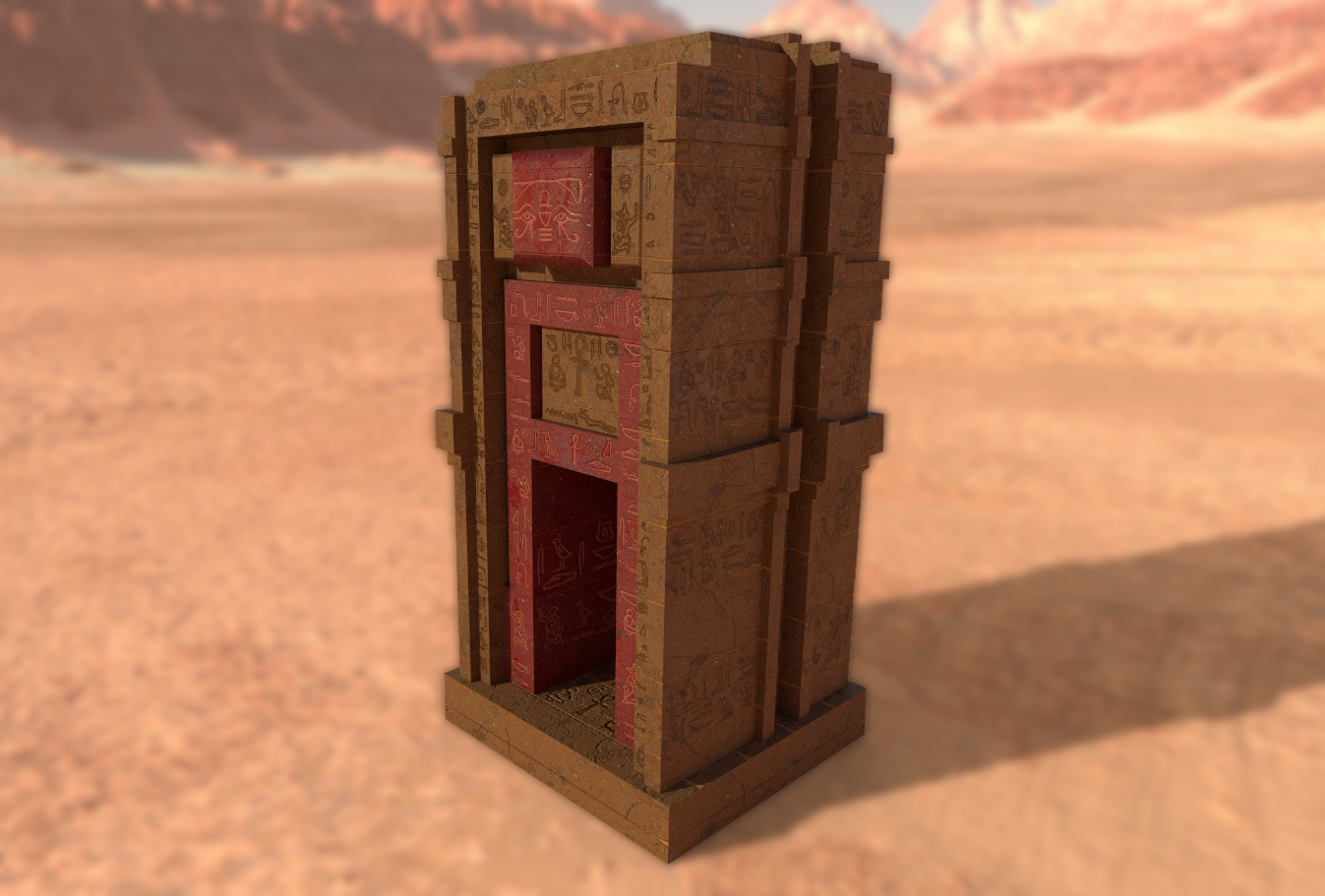
2D Artwork
2D Art after come up with the idea of the name pyramid panic, I developed following four illustrations base on the gameplay and name.
1. Falling down from the relieving chambers and start to run (Referencing the second chamber of a pyramid interior )
2. Pillar hall with glazing eyes in the deepest chamber.
3. Literally making the whole pyramid starts to panicking and keep the art direction consistent to the desert environment,
4. Emphasize more of the verticality and the shade of the place and complexity of the environment.
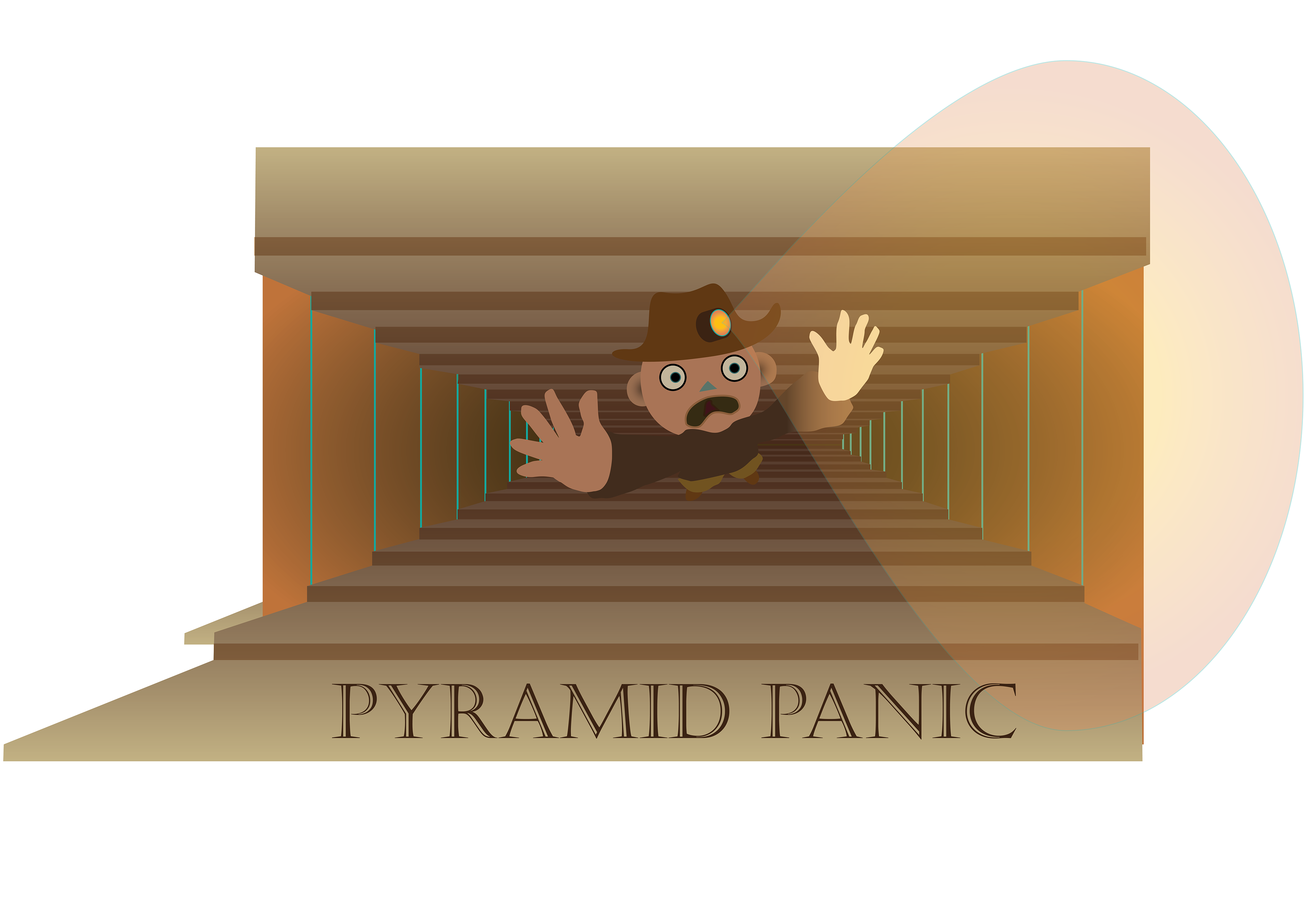
1. Falling down from the chamber
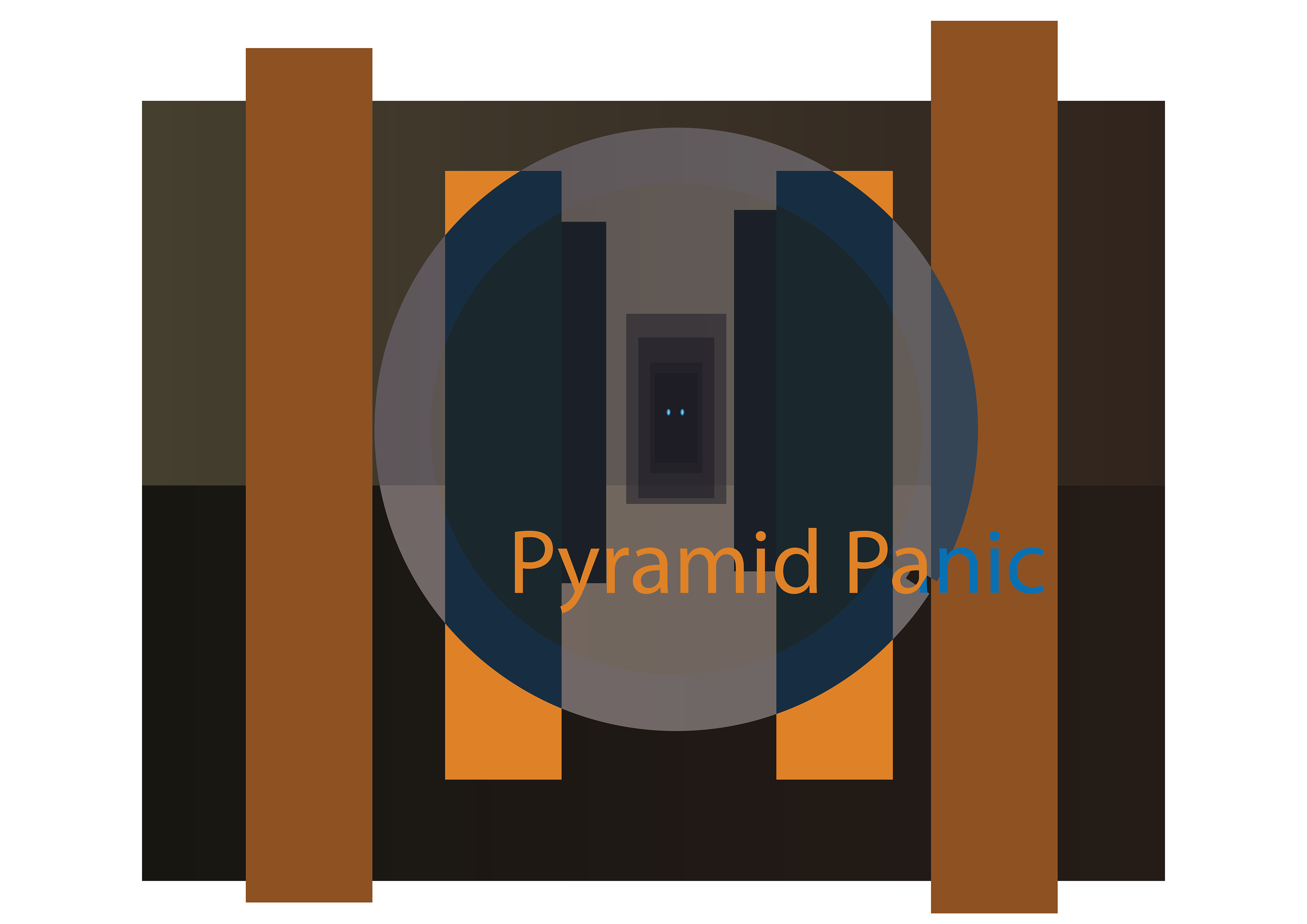
2. Glazing eyes in the deepest chamber
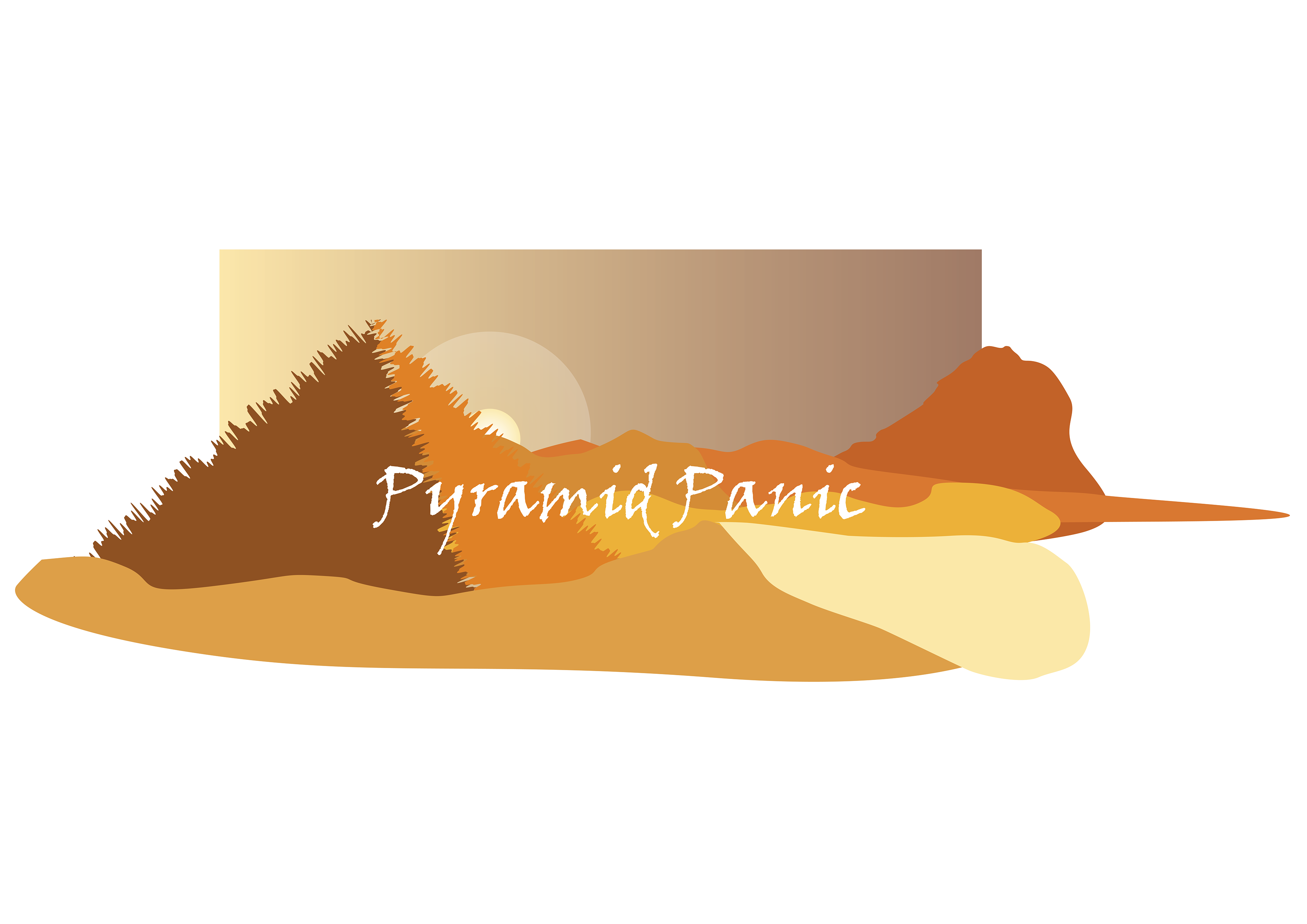
3. Pyramid panicking
